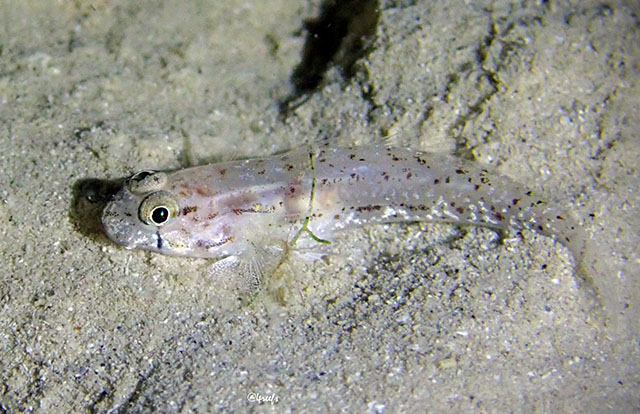| Gobiidae (Gobies), subfamily: Gobionellinae |
| 6.4 cm SL (male/unsexed); 6.1 cm SL (female) |
|
pelagic-neritic; marine; depth range 0 - 5 m |
| Western Central Pacific: Known only from the Hawaiian island chain. |
|
Dorsal spines (total): 7-8; Dorsal soft rays (total): 10-12; Anal spines: 1-1; Anal soft rays: 10-11. This large stocky Gnatholepis species (up to 64 mm SL) is distinguished by the following characters: cycloid scales on predorsal region, cheek and pectoral fin base; a distinct flap present at end of lower lip; 3 or more dark spots along first spine of first and second dorsal fins, followed by at least 3 rows of dark spots or short streaks; pectoral fin plain translucent to pale brownish; transverse black line crossing upper part of eye usually split in 2; anal fin plain dusky, often with one to several blackish rounded to oval spots posteriorly, or with dark streaks following membrane; D2 and A nearly always I,11; pectoral rays 15-17 (usually 16); lateral scales 25-29 (usually 27); predorsal scales 7-10 (usually 8-9) (Ref. 92171). |
| Most specimens have been collected from shallow habitats, tide pools or 'brackish pools', at depths of 0-5 m, from sand and mangrove areas (Ref. 92171). |
|
Least Concern (LC); Date assessed: 13 March 2015 Ref. (130435)
|
| harmless |
Source and more info: www.fishbase.org. For personal, classroom, and other internal use only. Not for publication.

